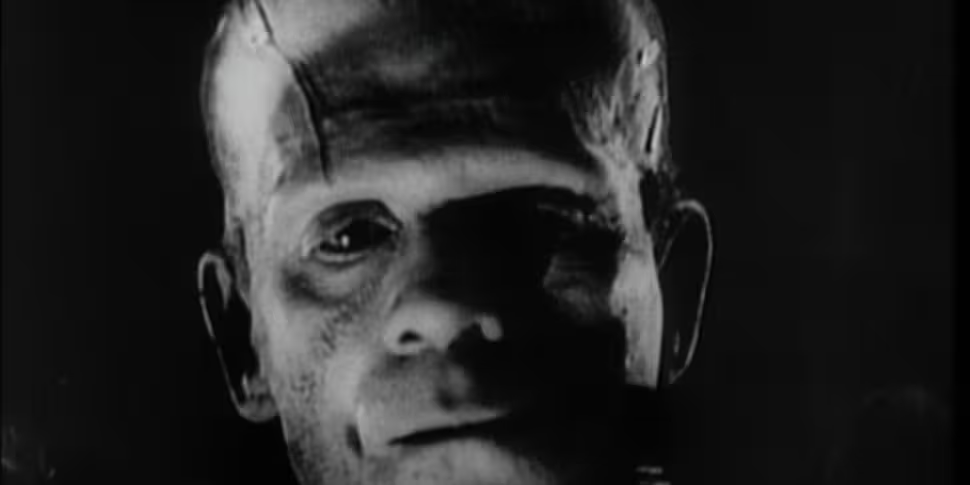Accursed creator! Why did you form a monster so hideous that even you turned from me in disgust
- ‘Frankenstein; or, The Modern Prometheus’ by Mary Shelley
Frankenstein’s monster stands alongside the sharp toothed Dracula as one of literature’s most iconic figures. His gruesome visage has appeared in numerous popular representations and is a Halloween mainstay. So popular is the image of the shambling monster with metal bolts in his neck that it has all but broken away from its original incarnation in Mary Shelley’s seminal work.
Yet ‘Frankenstein’ remains not only a pillar of the horror genre but one of the earliest works of science fiction and a fantastic reflection on the suffering of existence. It is hard to imagine that this great novel was conceived by an eighteen year old. Yet when we study Shelley’s life and travels it is hardly surprising that this young woman dreamed up such a riveting and heart wrenching story during a dark and rainy summer by Lake Geneva.
Mary was born in 1797 to the very liberal pairing of the political philosopher William Godwin and the feminist Mary Wollstonecraft. Despite her father’s fame and social standing, however, Mary’s life was one marked by struggle and loss. At a mere eleven days old her mother died leaving Mary, and her half-sister Fanny Imlay, to be raised by her father.
 'Portrait of Mary Shelley' by Richerd Rathwell, 1840
'Portrait of Mary Shelley' by Richerd Rathwell, 1840
Though suffering economic hardship from financial mismanagement William was able to give both girls a rich, though unusual, education. This included meeting with many of William’s friends and political admirers. One of these happened to be the radical poet and author Percy Shelley. Though already married Percy wooed the sixteen year old Mary Godwin and the two began a romantic relationship in 1814.
Later that year the two eloped to Europe, with Mary’s stepsister Claire Clairmont in tow. Travelling through France and Switzerland the couple chronicled their adventures and journey in journals and writings. A lack of funds soon forced all three wanders to return home and they followed the Rhine to the coast.
This was no triumphant return however. Percy, alienated from his aristocratic family by his radical ideologies, was penniless and Mary had become pregnant. Despite his liberal politics Mary’s father wanted nothing to do with either of the two on their return, leaving Mary and Percy to rely on the kindness of friends and Claire. This was, sadly, only the beginning of Mary’s misfortune.
In February 1815 she gave birth to a daughter. Born two-months premature there was little chance the child would live and within a month it had passed on. Compounding this grief was Percy’s relationships with his wife, Harriet, and Mary’s stepsister, Claire. Harriet had given birth to a son late the previous year, much to the joy of Percy who had also been showing increasing interest in Claire. Though she had grown up surrounded by the concept of free love, and was an advocate of it herself, the practice seems to have been anathema to Mary as she only had eyes for Percy.
 Poster of James Whale's 1931 'Frankenstein'
Poster of James Whale's 1931 'Frankenstein'
These factors, especially the loss of her child, had seen Mary fall into a deep depression. While a change in fortunes would see a lifting of this cloud from Mary’s shoulders these experiences undoubtedly left a mark on the young woman.
On February 24th 1816 Mary gave birth to her second child, a healthy boy named William. Only eighteen years old Mary had already known the full joys of being a mother and the pain of losing a child. With the passing of his grandfather the previous year Percy had earned a sizable inheritance. This allowed the family to live comfortably and to venture to Switzerland where they spent the summer with Claire and the poet Lord Byron.
It was here that concept of ‘Frankenstein’ was born. Besieged by bad weather the lakeside company were forced to find entertainment indoors. This led to Byron challenging all of his guests to pen a horror story. Mary remained stuck for inspiration until one restless night she had a waking dream wherein a man uses machines to bring a stitched together creature to life.
While Mary was undoubtedly inspired by the world’s fascination with electricity and its role in animating bodies ‘Frankenstein’ proved to be a massive leap in literary style. Until now all horror stories were driven by some supernatural or demonic powers. In this novel man became, for the first time, the originator of evil. Because of this focus on man and his ability to create ‘Frankenstein’ is regarded by many as the first work of science-fiction.
 Multiple editions of Shelley's 'Frankenstein'
Multiple editions of Shelley's 'Frankenstein'
It would be another two years before ‘Frankenstein; or, The Modern Prometheus’ was published anonymously. During that time Mary and Percy were to experience even more pain and loss. While abroad Mary had received letters from her half-sister Fanny complaining of her unhappy life. A month after Mary and Percy returned home Fanny was found dead with a suicide note and a bottle of laudanum.
Two months after this, on December 10th, Percy’s wife Harriet drowned herself in Hyde Park. Mary and Percy were married later that month, probably in an attempt to better his chances of gaining custody of his children. Despite these efforts and Mary’s support Percy was not granted custody. In 1818, with failing health and debt hanging over their heads, the couple left to start a new life in Italy.
That same year saw the first publication of ‘Frankenstein’. The book was widely popular, despite a poor reception from critics. Four years later a second edition was released, this time bearing Mary’s name as author. In the years and centuries since this work has continued to prove itself a masterpiece not only of the horror genre but writing in general.
Join Susan as she talks with author Suzanne Burdon about her latest book, ‘Almost Invincible: A Biographical Novel of Mary Shelly’, and the life of this giant of literature.

In the second half of the show we look at gothic fiction and one mean cat with author Lynne Truss. Mainly known for her books on grammar and punctuation, Lynne’s most recent book is a novel centred on Roger and his macabre adventures. What makes this novel unique is that our suave antihero happens to be a cat.
In a nod to Stoker’s ‘Dracula’ Lynne tells Roger’s story through a series of notes, e-mails, and a screenplay. This is only one of a number of literary homages in ‘Cat Out of Hell’ which makes numerous references to past giants of the horror genre. An obvious fan of gothic fiction Lynne takes us through the writing of Roger’s adventure and the novels that inspired her along the way.
Join Susan and Lynne as we get acquainted with this ancient feline and his nefarious activities. What is it that makes Roger tick? Where has his long life come from? And what did he have to give in exchange?









